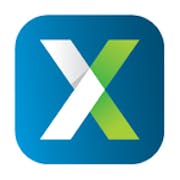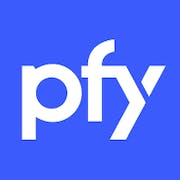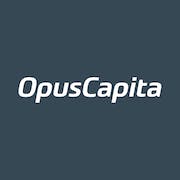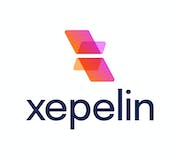Are you looking for the best procurement software for your business? Our comprehensive buyers guide covers everything you need to know to make an informed decision when finding the perfect solution for your needs.
As organizations continue to grow in size and complexity, procurement has become an integral part of their operations. Procurement is no longer just about purchasing goods and services; it has evolved into a strategic function that drives business success. To stay competitive, organizations need to adopt efficient procurement processes that can streamline their operations, reduce costs, and eliminate manual errors. This is where procurement software comes in. Research has shown that 95% of key decision-makers feel that their procurement solutions could be optimized. In this buyer's guide, we will explore its benefits, and help you make a wise decision about the right solution for your business.
What is procurement software?
This is a type of business application that facilitates the procurement process. This process involves the acquisition of goods and services needed to run a business. Procurement technology streamlines this process, automating manual processes, reducing the need for manual taskswhile increasing efficiency, saving businesses time and money as well as improving transparency
Common use cases where procurement software can be used include:
- Purchase order creation: The program simplifies the creation of purchase orders. It allows for the creation of templates, automatically sends purchase orders to suppliers, and enables real-time tracking of orders and delivery status.
- Vendor management: Businesses can use it to manage their relationships with suppliers. The solution allows for easy tracking of supplier performance, provides analytics and metrics, and enables supplier rating and comparison.
- Contract management: A procurement tool simplifies the creation and management of contracts. The software enables the creation of templates, automates approval workflows, and ensures compliance with regulatory requirements.
- Spend analysis: Businesses can use a procurement platform to analyze their spend patterns. It provides detailed reports based on spend data, empowers data-driven decision making, and helps to identify opportunities for cost savings.
This tool is used by businesses of all sizes, ranging from small startups to large corporations. It is especially useful in organizations with complex supply chains and where the procurement process involves multiple stakeholders and approvals.
Companies in the following industries often utilize it:
- Manufacturing
- Retail
- Healthcare
- Financial services
- Hospitality
- Transportation
What are the benefits of procurement software?
Below are some of the main benefits of investing in a procurement software solution:
● Cost-saving: With procurement technology, businesses can automate repetitive procurement tasks, thus freeing up human labor for other important duties. By automating these tasks, businesses can save significantly on labor costs.
● Improved accuracy: The software helps to eliminate human errors that may occur during data entry and processing. This ensures that all procurement processes are carried out accurately, which in turn reduces the chances of costly errors such as double orders and over or underpayment for goods and services.
● Better decision making: Itprovides real-time data on procurement activities- from purchase requests to payment processing. This gives stakeholders insights into procurement trends, which can be used to make more informed decisions.
● Better supplier management: Itsfeatures enable businesses to manage supplier data more effectively, including performance data, pricing, and contract information. By doing so, businesses can make better supplier decisions and build more productive relationships with them.
● Improved compliance: A procurement package helps businesses to stay compliant with regulatory requirements by providing customizable workflows and templates that can be modified to meet specific needs. This feature ensures that businesses adhere to regulatory demands, avoid penalties and keep their operations running smoothly.
10 key features of procurement software
With the help of this software, organizations can easily automate many of their procurement tasks, including supplier management, purchase orders, and other important functions. Here are 10 common features that businesses should look for when adopting this tool:
1. Centralized procurement: A procurement system provides a centralized platform for all procurement related activities, allowing businesses to manage procurement conveniently from one location.
2. Supplier management: Many procurement software packages include supplier management tools that allow businesses to manage their suppliers' information, contracts, and performance.
3. Purchase orders: It allows businesses to create and manage purchase orders easily, which can help to maintain consistency and accuracy.
4. Contract management: It also offers tools to manage contracts more efficiently, allowing businesses to track compliance, renewals, and monitor obligations.
5. Spend analysis: The solution provides essential tools to help organizations monitor their spending and identify cost-saving opportunities.
6. Vendor management: A procurement program includes vendor management tools that enable businesses to assess the performance of their vendors, track compliance, and manage risks.
7. Automated workflows: The software automates tasks, reducing errors and saving time while freeing up skilled employees for more strategic work.
8. Strategic sourcing: A procurement application enables organizations to quickly and efficiently find and evaluate suppliers, which allows them to optimize processes and minimize costs.
9. Real-time data: It enables businesses to access real-time data that allows them to react quickly to changing circumstances and make informed decisions.
10. Customization: Procurement software offers a high degree of customization, allowing organizations to tailor their procurement workflows to better fit their unique needs.
What to consider when implementing in a procurement tool?
There are a wide range of procurement software options available on the market, and it can be challenging to determine which system will work best for your business needs. Here are some factors to consider before making a purchasing decision.
1. Integration - Consider how well the tool can integrate with other systems like your financial suite and ERP systems. A system that works seamlessly with other applications can help streamline business operations.
2. User-friendliness - The system should be user-friendly and easy to understand, with clear and concise navigation and reporting tools. Employees should be able to learn how to use the software quickly and easily.
3. Scalability - Consider whether it is scalable enough to grow with your business. It's important to choose a system that can handle increased volumes of transactions and data as your business grows.
4. Features - Look for features that can support your company's unique needs. For instance, if you're in the manufacturing industry, you might require a materials tracking feature. Take the time to research and identify which features would best serve your company's unique needs.
5. Customization - Consider whether the platform can be customized to your company's unique needs. It's important to have one that can adapt and change as your business grows and your needs change.
6. Cost - Finally, consider the cost of the procurement system and whether it fits into your budget. While the price may be important, it's important not to just choose the cheapest option. A more expensive app may have more features you require and provide a better ROI in the long run.
8 industry trends for procurement management software
In 2024, procurement technology is only going to become more ubiquitous and essential for modern enterprises. With more and more organizations adopting it, the industry is evolving rapidly, and new trends are emerging. By keeping up with these trends, organizations can stay ahead of the competition and maximize their success.
Here are some of its biggest trends:
1. Artificial intelligence (AI) and robotic process automation (RPA) - AI and RPA are increasingly being integrated into procurement software systems to enhance workflow automation, reduce manual errors, and increase efficiency.
2. Cloud-based procurement software - As the popularity of cloud computing continues to grow, cloud-based procurement software is becoming the preferred choice for many enterprises as it can be easily accessed remotely and is cost-effective.
3. Mobile procurement - Mobile procurement is becoming more popular as organizations look to streamline their processes and enable staff to manage procurement from anywhere.
4. Data analytics and visualization - This solution's ability to collect vast amounts of data is being harnessed by organizations to gain insights into procurement operations and make more informed decisions.
5. Advanced reporting and dashboards - Organizations are increasingly looking to standardize procurement report formats and create customized dashboards to gain real-time visibility into procurement activities.
6. Supplier relationship management (SRM) - Increased competition is driving organizations to focus more heavily on supplier management and developing closer, more collaborative relationships with suppliers.
7. Inclusive procurement - Diversity and inclusion are rapidly becoming a central focus for procurement teams. Procurement technology can help organizations track supplier diversity and implement inclusive procurement practices.
8. Blockchain - Blockchain technology is rapidly gaining traction in the procurement industry. Its ability to create an immutable record of transactions makes it ideal for procurement applications such as supplier verification and tracking.
Conclusion
40-70% of all business costs are procurement-related, and these costs are often a volatile source of competitive advantage. Organizations that stay abreast of trends mentioned in this guide will be better equipped to optimize their procurement processes, reduce costs, and drive growth. The use of this innovation has become paramount in many industries, and it will continue to be an important tool for strategic planning and growth while transforming their procurement function.







